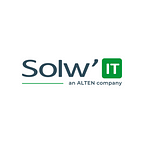IoT Hacks #4 Bluetooth 5.x in IoT
You may have already read about the use of solar panels in smart sensors and the Wi-SAN protocol. This time we have a few words to say about Bluetooth, as new products that use Bluetooth versions 5.0 to 5.2 have hit the market.
New updates in Bluetooth technology
Bluetooth 5.0
The Bluetooth standard has seen the introduction of many interesting functionalities since version 5.0. We have compiled them in the table below.
The first change that Bluetooth 5.0 brings is much faster data transfer — it’s 2 Mbps compared to 1 Mbps provided by the previous iteration.
What is more, the range has increased — up to 240m in an open area and 40 m in an office environment. This is a significant improvement over BT 4.2.
Especially important from the point of view of IoT devices is the support of MESH networks while operating in low-power mode. Both of these functions are used by the latest smart sensors.
Another important point is the ability to connect two receivers at the same time to one BT transmitter.
Bluetooth 5.1
With the arrival of BT 5.1, new direction-finding methods have been introduced, such as Angle of Arrival (AoA) and Angle of Departure (AoD), which enable a receiver and transmitter to determine their relative positions to each other. Comparatively, the BLE version that used the Received Signal Strength Indicator (RSSI) was much less precise.
Another feature introduced by BT5.1 is GATT (Generic Attribute Profile) caching. Once devices are connected, GATT deals with communication between them, and may work using profiles predefined for specific devices. These presets define the data and the format in which it will be transmitted by the device, and thanks to the buffering offered by GATT, profile/communication requirements are always within the memory of the devices. This functionality improves the time it takes to connect the devices to each other, while also improving the stability of the connection.
Another major improvement lies within the efficiency of the protocol. BT 5.1 has much lessened Energy requirements, as improvements within the broadcasting process led to the possibility of synchronizing the process of scanning and sending of information when establishing a connection. Subsequent connections have also seen a significant improvement, as devices may share connection data, keeping it in the memory, thus saving both Energy and time. For example, if you have both headphones and a smartwatch connected to your phone, later, when you try to connect your headphones to your smartwatch, less data will need to be exchanged.
Bluetooth 5.2 — Energy consumption is everything
The most important feature brought by the new protocol is LE Audio (LE for Low Energy). Devices using it come with a new, better codec (LC3) which enables much better audio transfer. This means longer runtime on the same battery capacity, all the while improving the quality of the sound.
EATT — Enhanced Attribute Protocol
Thanks to EATT, users can connect to two BT devices at the same time. This means you can use multiple applications, and then on top of that the connection is encrypted, which means it’s more secure.
ISOC — Isochronous Channels
Isochronous Channels (ISOC) are a type of multipoint communication technology that allows one transmitter to communicate with multiple receivers. They are an improvement over previous technology and are especially useful for devices with Bluetooth 5.2, as they enable the use of low-energy audio for communication with multiple devices that can be processed in a time-synchronized manner.
LEPC — Low Energy Power Control
LEPC means that two connected devices may dynamically optimise the power used in the communication between them, while also allowing not only the transmitter, but also the device connected to it to control the power of the connection. Worth mentioning is also the possibility of exchanging information between the connected devices, all in order to keep an optimal strength of signal between them, all from an energy saving perspective.
Summary
Bluetooth version 5.x means improved energy efficiency, enhanced connection and transmission performance, all of which mean a lot, especially for IOT devices that are battery powered.
If you are wondering whether it is possible to extend the battery life of your IoT device, or you are looking for a technology partner to create dedicated IoT solutions — get in touch with us! We have successfully delivered many projects that required energy harvesting and we will be more than happy to tell you how this can be done. Drop us a line to arrange a free consultation!
The text originally appeared on Solwit blog.
Written by Solwit Team
